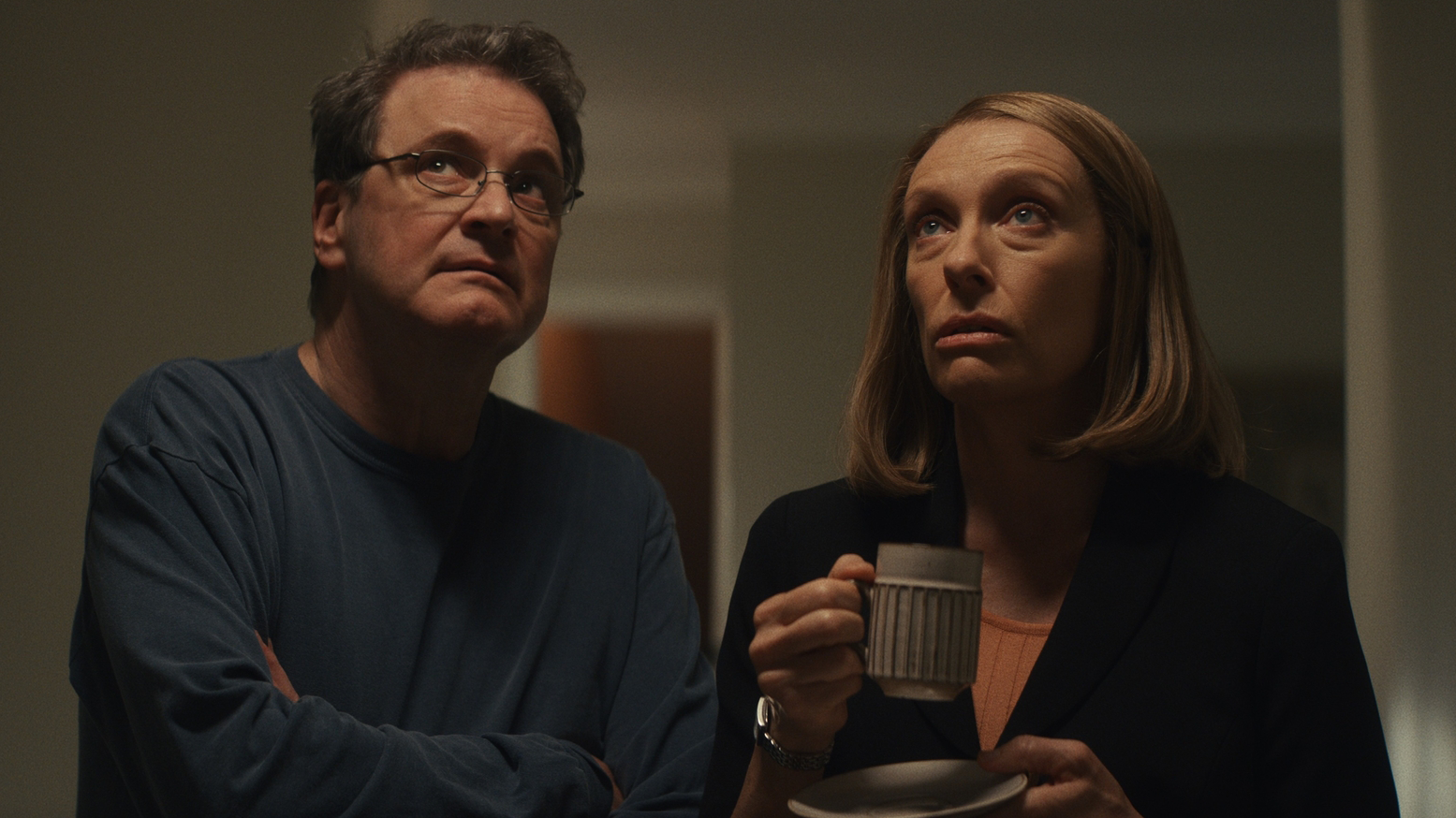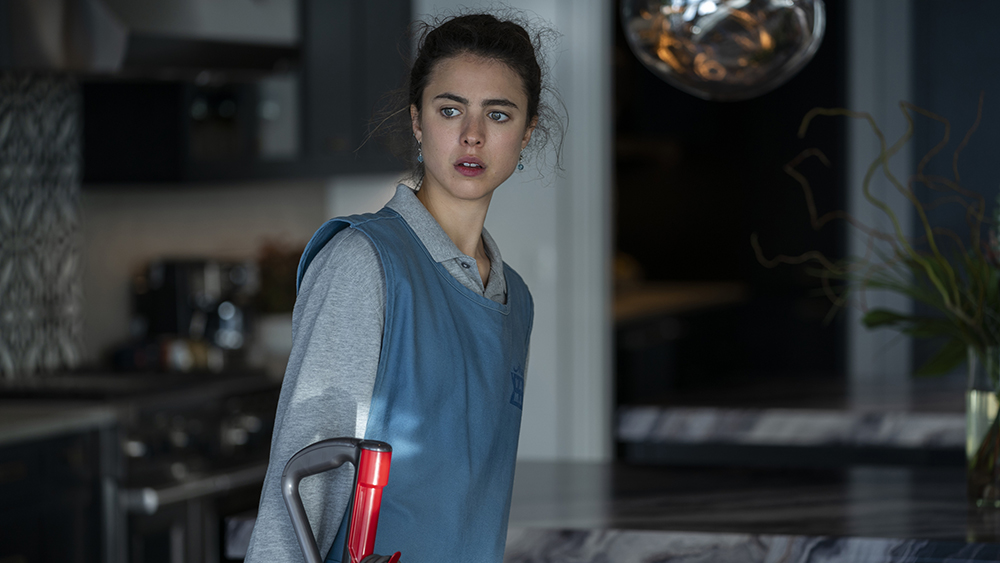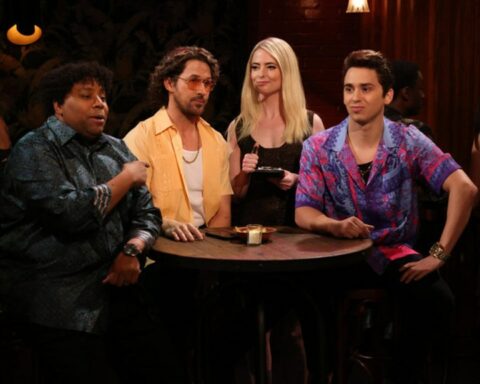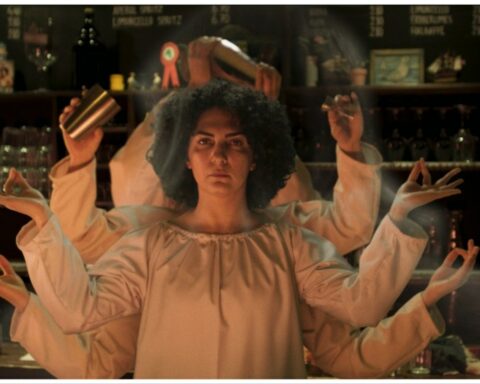A television star violated by the public eye. A whistleblower with ulterior motives. An inventor who wasn’t as revolutionary as she advertised. A woman whose shocking death became a sensation. A con artist with a flair for the dramatic. A young mother providing for her daughter one housekeeping job at a time.
As disparate as these characters may seem, two threads bind them together — they’re all based on or inspired by real women, and they earned those who played them Emmy nominations for lead actress in a limited or anthology series.
For the first time in more than a decade, every nominee in the category played a character inspired by, if not directly based on, a real person. The last time this happened was 2009, when Jessica Lange took the win for HBO’s “Grey Gardens.
The category sweep isn’t exactly surprising considering the wealth of fact-based contenders who flooded this year’s ballot, a crowded field that ultimately didn’t have room for heavy-hitters including Julia Roberts, Anne Hathaway, Viola Davis and Michelle Pfeiffer.
As distinct as the nominated characters are, so too are the reasons why and how each actor brought them to life. Variety went directly to the nominees and those who worked closely with them to learn how they navigate the blurry line between fact and fiction.
Julia Garner, “Inventing Anna”
If Anna Sorokin were mistaken as a fictitious creation of Shonda Rhimes, no one would think twice. The fact that she is a real-life con artist who swindled the New York City elite out of money and dignity by posing as a German heiress named Anna Delvey made her the perfect subject for the first show Rhimes created under her Netflix deal.
As Anna, Garner’s undeniable charisma and biting classist superiority proved she was up to the dubious challenge of embodying a woman who built a reputation on being an enigma. She also did it with an inflection that one cannot simply describe as an accent. More accurately, it is an experience to behold – and memed. Executive producer Betsy Beers notes, “She, like Anna, is a chameleon, and has the uncanny ability to truly become the character she is playing.”

Colin Firth and Toni Collette in “The Staircase.”
Courtesy of HBO Max
Toni Collette, “The Staircase”
Collette portrays Kathleen Peterson, a North Carolina woman whose grisly 2001 death sparked a media frenzy. Whether in news coverage or the now-famous 2004 documentary “The Staircase,” which closely followed her husband, Michael’s (Colin Firth), trial and conviction for her murder, Kathleen has too often been treated as a past-tense presence. Collette wanted to change that, harnessing the memory of the victim to give the woman a voice.
“I definitely felt a responsibility to Kathleen and her existing family,” Collette says. “In reality, our job as actors is to make it all feel as honest as possible. Whether a story is based on something that happened or whether it’s fiction, the challenge remains the same — bring truth.”
Creator Antonio Campos places Kathleen at the heart of the series through flashbacks, while Collette gamely throws herself, literally, into recreating three brutal and harrowing death scenes — each one testing a theory of what might have happened. In this series, Kathleen finally isn’t just a name spoken from the stand.
Sarah Paulson, “Impeachment: American Crime Story”
Paulson often calls upon a valuable piece of advice her “12 Years A Slave” director Steve McQueen gave her as she prepared to play a vindictive slave-owning woman: “You cannot judge this woman.”
She again summoned those words when playing Linda Tripp, one of the most judged women in American history. Whether it is Tripp, who set Monica Lewinsky up to expose her affair with President Bill Clinton, or Marcia Clark, who Paulson previously won the Emmy for playing in “The People v. O.J. Simpson” she says playing a real person is about finding her own understanding of their motives, not changing public opinion.
“There’s a wonderful blueprint of facts that you truly know about a person that make it easier for me to be free somehow, because I have a real backbone and a spine of the thing that I know is irrevocable,” she says.
Amanda Seyfried, “The Dropout”
The story of Theranos founder Elizabeth Holmes doesn’t need to be embellished for the sake of drama. The Silicon Valley wunderkind went from deity to disgrace in spectacular fashion, and Seyfried says changing any of it would have been, well, a crime.
“You always have to be careful when you’re doing something based on factual events that you let the eccentricity of the real story speak for itself,” she says. “Truth is always, always stranger than fiction and if you put too much of a spin on things it loses something.”
Encouraged by her category’s fact-based performances, Seyfried says there’s a hunger for stories that authentically tell a woman’s lived experience, not a man’s notion of it.
“I think women, regardless of their political leanings, are tired of being discussed, legislated on, imagined, lectured to and marketed to by men who haven’t bothered to listen or learn,” she adds. “So, we’re seeing a lot of stories about what it is actually like being a woman, in all of our multitude of ways, in this world, rather than what a man thinks it is like to be a woman in their very limited ways.”

RICARDO HUBBS/NETFLIX
Margaret Qualley, “Maid”
Qualley had the most uniquely delicate balance to strike. “Maid” is inspired by Stephanie Land’s memoir, “Maid: Hard Work, Low Pay and a Mother’s Will to Survive,” but the series follows a distinctly different character whose experiences mirror Land’s. Alex Russell, a young woman who escapes an abusive relationship, takes a job as a maid to provide for her daughter; Qualley had to take what was etched into Land’s experience and chart her own course. Creator Molly Smith Metzler says it would have been easier to simply pull in Land’s compelling source material, but that didn’t do justice to her or the woman Qualley sought to personify on screen.
“Margaret and I had to allow Alex to be her own person, complete with terrible decision-making skills, a gallows sense of humor and tumultuous relationships with her family,” says Metzler. “Throughout our work creating Alex and her arc, we aimed to honor the emotional spine of Stephanie’s experience while making it our own.”
Lily James, “Pam & Tommy”
James’ transformation into ‘90s-era Pamela Anderson could have been an eye-catching but otherwise surface-level recreation of an exploitative cultural moment. Instead, she always saw it as an opportunity bigger than herself, and she became “fiercely protective” of it.
“It’s such a female experience, and I knew the show was going to explore how a violation of this kind affects women,” she says. “How we victimize women is shocking to me. I felt passionate about exploring this bravely and honestly. I constantly felt a huge responsibility and I wanted to capture something about the essence of Pamela Anderson whilst revealing a lot of myself too.”
She also had to be mindful to never lose herself in the responsibility of it all: “The tightrope existed in constantly feeling like a custodian of the person I was playing and simultaneously trying to exist and respond solely in the moment.”
Amanda Seyfried, Lily James and More Emmy Nominees Spill on Bringing Real Women to Life on Screen







